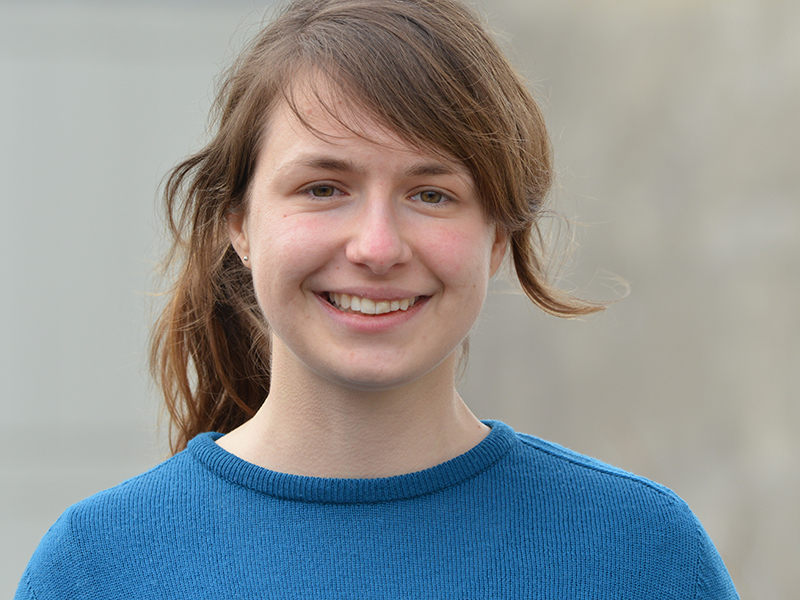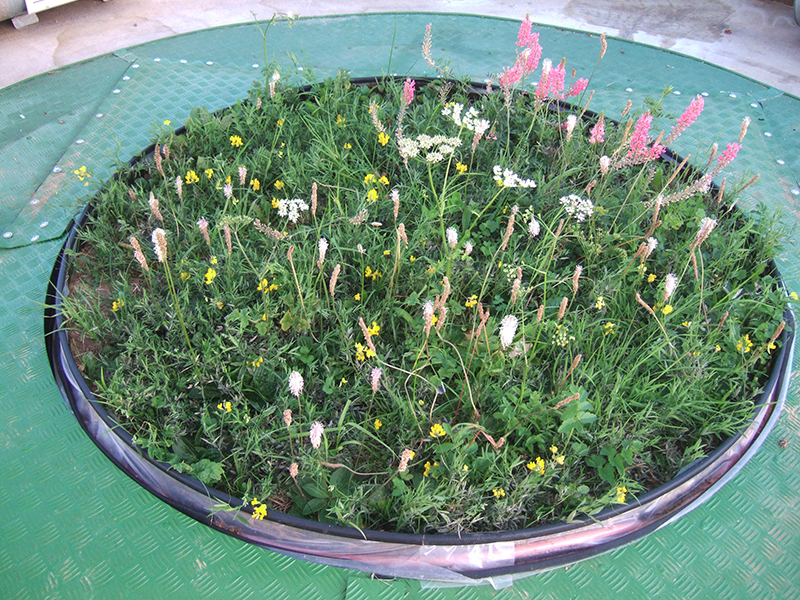Biodiversity mechanisms critically examined
The biologist Dörte Bachmann receives the Hans Vontobel Award 2015. In her doctoral thesis, Bachmann examined why biomass production of diverse grassland is larger than that of less diverse grassland. The findings captured people's attention.

The award is the first in Bachmann’s research career, which is still in its early stages. Each year, the charitable Vontobel Foundation awards the Hans Vontobel Award for an outstanding doctoral thesis in the area of agricultural sciences. Winning the award took the 29-year-old scientist by surprise, but she was also “incredibly pleased.” “It is really a wonderful feeling to be honoured for one’s work.”
In her doctoral thesis, she considered how biomass production and biodiversity are connected and how these connections come into being. In previous studies, ecologists have consistently found that species-rich plant communities produce more biomass in comparison with species-poor, and therefore can retain more carbon. It remained unclear, however, why this is the case.
Theoretical concepts postulate that different species as well as functional groups, in which species with similar growth habits are combined, occupy distinct niches. Thus, species and functional groups use limited resources, such as water, light and nutrients, in a complementary manner. This should reduce the competition among the various participants. Biodiversity can thus optimise the use of soil resources and ultimately promote biomass production. These theoretical concepts, however, have not been proven in experimental studies until now.
Participation in the Jena Experiment

In order to verify the causes of this well-established concept, Bachmann conducted three studies as part of her doctoral thesis with Nina Buchmann, Professor of Grassland Sciences at ETH. She identified, inter alia, the soil depth at which plants take up water through their roots, how plants react to the available light within their plant community, and finally how carbon dioxide uptake and water loss depend on biodiversity.
The researcher conducted the first two experiments at a study site close to the city of Jena in Thuringia (Germany). For more than 12 years, researchers from across Europe have conducted ecological studies under uniform conditions at the ‘Jena Experiment’.
Bachmann examined 40 subplots of grassland communities made up of two, four, eight, and 16 plant species – from a pool of 60 randomly selected, but typical European grassland species.
Light or water?
She conducted trials with heavy water by supplying plants with water either labelled with heavy hydrogen or oxygen isotopes at two different soil depths. She was thus able to show that water uptake, regardless of the number of species and independent of the functional groups, always took place more or less at the same soil depth, namely from the upper soil layers. “Species-rich grasslands in temperate regions indeed have higher biomass production; however, the reason is not a complementary use of water from different soil depths,” explains the researcher.
The cause also does not lie in the plants’ complementary use of light, as suggested by another common hypothesis. Light profile measurements within the grassland plots and various leaf characteristics measured over the course of the year showed the ETH PhD student that the various plant species and functional groups in species-rich communities do not use light better than species-poor stands. “I did not find any clear evidence for niche complementarity in terms of light use in my experiments,” she says.
Species richness increases resource use efficiency

Lastly, in collaboration with other scientists, the biologist analysed whether the number of species affects the uptake of carbon dioxide as well as the loss of water. The research group transported 12 large blocks of grassland with a surface area of two square meters and a depth of two meters containing either four or 16 species from Jena to Montpellier (France). The blocks were then placed in special closed chambers. Together with colleagues, Bachmann identified the carbon dioxide and water vapour fluxes from the individual grassland communities. The results of this study clearly demonstrate that biodiversity has a positive impact on biomass production: the plant communities with 16 species and a higher number of functional groups took up more carbon dioxide compared to those with just four species. Species-rich communities also used water and nitrogen resources more efficiently than species-poor grassland communities.
“With her work, Dörte Bachmann has made an important contribution to the understanding of a crucial issue of agroecology,” says Bruno Studer, Professor for Forage Crop Genetics at the Institute of Agricultural Sciences and a jury member for the Hans Vontobel Award. She critically scrutinised an important ecological concept and obtained differentiated results, which, in part, deviate from the established doctrine. This was the decisive factor that favoured her winning the prize. It is not necessarily the biodiversity, but also the balanced allocation of functional groups that has a positive impact on resource use, according to Studer’s assessment, with potential implications for the agricultural practice to support species-rich meadows.
Rewarding experience
Looking back, Bachmann says she is very pleased that she chose to do a dissertation. “It was three rewarding years in an international environment, the collaboration with other researchers was great, and the field work in Jena was pleasant, but tough as well.” She learned a lot about herself and her profession during this period. The work required a lot of self-discipline: “at times, I was completely on my own.”
Bachmann is a relative latecomer as a plant scientist and biologist. She says: “For a long time, I did not know what I wanted to study.” She finally enrolled in biology, which she studied in her home town of Halle. Her botany professor at the time kindled her enthusiasm for plants.
She completed her doctoral thesis in April 2014 and currently works at ETH Zurich in the area of Life Cycle Assessment (LCA) under Professor Stefanie Hellweg; however, this position will end at the end of July 2015. She has not yet decided whether she will stay in research. The young researcher currently lives in Zurich and would like to remain in Switzerland where she has made some good friends with whom she enjoys walking, climbing, bike riding, and concerts. “I don’t want to be without the mountains.”
Literature references
Milcu A, Roscher C, Gessler A, Bachmann D, Gockele A, Guderle M, Landais D, Piel C, Escape C, Devidal S, Ravel O, Buchmann N, Gleixner G, Hildebrandt A, Roy J (2014) Functional diversity of leaf nitrogen concentration drives grassland carbon fluxes. Ecology Letters 17: 435–444. doi: external page 10.1111/ele.12243.
Bachmann D, Gockele A, Ravenek JM, Roscher C, Strecker T, Weigelt A, Buchmann N (2015) No evidence of complementary water use along a plant species richness gradient. PLos ONE 10(1): e0116367. PLoS One. 2015; 10(1): e0116367. doi: external page 10.1371/journal.pone.0116367
Comments
No comments yet